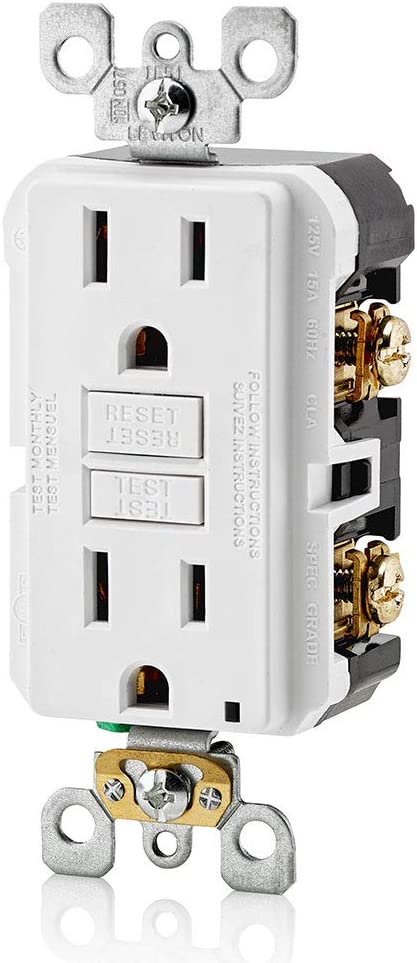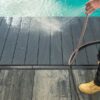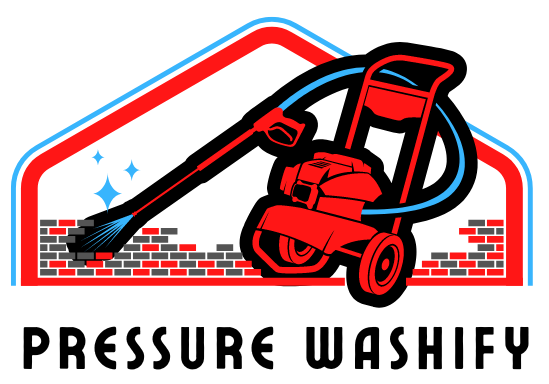Affiliate Disclaimer: This post may contain affiliate links, meaning we get a commission if you decide to make a purchase through our links, at no extra cost to you.
In today’s world, cleanliness and maintenance take center stage. Whether it’s our cars, patios, or other outdoor areas, we find ourselves amidst surfaces that demand regular upkeep. Traditional cleaning methods, although reliable, often fall short in efficiency and effectiveness. That’s where an electric pressure washer comes into play, serving as the perfect blend of power, convenience, and superior cleaning capability.
But how exactly do you unlock this tool’s full potential? How can you ensure optimal performance and long-lasting durability from your electric pressure washer? Our comprehensive guide on “How to Use an Electric Pressure Washer” seeks to answer these crucial questions.
Choosing the Right Electric Pressure Washer
Different types and sizes of electric pressure washers
There’s no one-size-fits-all solution when it comes to electric pressure washers. Consider your needs before choosing. Light-duty pressure washers handle small jobs like cars and patios. Medium-duty models tackle decks and fences. Heavy-duty options clean stubborn grime on large areas.
Read more about types of electric pressure washers.

Major brands and their features
Know your options. Popular brands include Karcher, Sun Joe, and Ryobi. Research their product lines and features to find the best fit for you. Consider factors like durability, pressure output, and warranty when making your choice.
Factors to consider while selecting the right model
- Power Output: Measured in psi (pounds per square inch), it indicates the cleaning strength of your pressure washer. Higher psi values clean faster and more effectively.
- Flow Rate: Gallons per minute (GPM) represents water flow. Higher GPM equals faster rinsing and cleaning time savings.
- Cleaning Units (CU): The product of psi and GPM, CU is an essential indicator of overall cleaning efficiency.
- Portability: Look for lightweight models with wheels and handles to make moving your pressure washer easy.
- Accessories and Attachments: Consider the types of nozzles, extension wands, and attachments included to handle various cleaning tasks.
Take time to evaluate your cleaning requirements, budget, and preferred features before committing to a specific electric pressure washer model.
Learn to make the best choice with our electric pressure washer buying guide.
Safety First
A powerful tool like an electric pressure washer requires careful handling. Always prioritize safety.
General Safety Guidelines
- Equip yourself appropriately. Wear sturdy, non-slip shoes, safety glasses, and gloves.
- Clear your workspace. Remove toys, plants, or other movable items from the cleaning area.
- Keep children and pets away when operating the washer.
Electrical Safety
- Always use a dry, grounded power source.
- Utilize a Ground Fault Circuit Interrupter (GFCI) to prevent electrical shocks.
- Never attempt to use the pressure washer in rainy or wet weather.
Leviton GFNT1-W GFCI Outlet

We highly recommend using the Leviton GFCI outlet for maximum protection when using an electric pressure washer.
This high-quality outlet offers:
– Self-testing for faults
– 15 Amp protection
– Slim profile
– LED light indicator
Protecting Sensitive Surfaces
- Avoid pointing the pressure washer at fragile surfaces like glass or thin plastic.
- Always start with a low-pressure setting. Gradually increase as needed, assessing the impact on the surface.
- Test a small, inconspicuous area first before focusing on larger, more visible parts.
Get to Know Your Electric Pressure Washer
Knowledge is power, so understand your tool before you use it.
Understanding Main Components
- Take note of your power cord. This connects to your power outlet.
- Locate your hose and nozzle attachments. These dictate the strength and shape of your water spray.
- Identify your detergent tank or inlet. This is where your cleaning solution enters the mix.
Pressure Settings
- Each pressure washer has variable settings, expressed in psi (pounds per square inch).
- Lower psi is ideal for delicate surfaces. Higher psi tackles tougher grime.
- Always start at a lower setting and increase it gradually if needed.
Setting Up Your Washer
- Assembly varies between models. Follow the manual closely for your specific model.
- Attach your cleaning hose and select your nozzle.
- Fill your detergent tank (if using) with the recommended cleaning solution.
- Connect to your water source, typically a garden hose.
- Plug into a grounded electrical outlet with GFCI protection.
Step-by-step Guide to Using an Electric Pressure Washer: From Setup to Operation
With the right approach, an electric pressure washer can transform even the most demanding cleaning tasks into simple chores. Here’s a detailed, step-by-step guide to empower you with the knowledge and confidence to use your electric pressure washer like a pro.
Preliminary Setup
First, place your pressure washer on a stable, flat surface. Guarantee that all switches are off and unplug the machine for safety reasons during setup.
Connecting Water Source
Next, secure your garden hose to your machine’s water inlet. Ensure it’s tightly connected to prevent leaks.
For instance, an improperly connected hose could result in decreased water pressure and an inefficient wash.

Power Connection
After securing your water source, plug your electric pressure washer into a grounded, GFCI-protected power outlet. Always use an outdoor-rated extension cord, if needed.
Inspection and Setup of Hose and Nozzle Attachments
Before starting your washer, inspect your hose and nozzle for any signs of wear or damage. Attach the high-pressure hose to the machine and the gun. Then, select the appropriate nozzle for your cleaning task—e.g., a 15-degree nozzle is ideal for hard surfaces like driveways, while a 40-degree nozzle works well for gentler washing on wooden decks.
Knowing the Correct Cleaning Detergents to Use
Always use pressure-washer-friendly detergents. Adding the right detergent can make your cleaning more efficient. For instance, a degreaser could work wonders on oil stains on your driveway.
Operating Best Practices
- Proper Stance and Grip – When operating, plant your feet shoulder-width apart and grip the spray gun with both hands. A firm stance offers better control and minimizes fatigue during extended cleaning sessions.
- Selecting and Holding the Spray Nozzle – Choose a spray nozzle that suits the task at hand. For example, if you’re cleaning a concrete surface, opt for a zero- or 15-degree nozzle. Hold the spray gun at an angle to the surface for maximum effectiveness.
- Optimal Spray Angles and Movements – Ideally, aim the spray at the surface at a 45-degree angle. This can prevent etching or other damage. Use consistent side-to-side sweeping motions for the best results.
- Techniques for Various Surface Types – Different surfaces need different care. For instance, a softer surface like wood may need a gentler wash—using a 40-degree nozzle—compared to hard surfaces like concrete.
- Optimal Order and Rhythm for Cleaning Large Areas – When cleaning large areas, pace yourself. Begin at the top and work your way down on vertical surfaces to prevent streaking. For horizontal surfaces, select a distinct quadrat to work on at a time, moving systematically across the whole area.

Maintenance and Storage
Taking care of your electric pressure washer ensures its longevity. Regular maintenance and proper storage keep your machine in the best condition.
Machine Maintenance
- Clean out the detergent reservoir after use. This prevents build-up which can block or damage your system.
- Flush out your system after every use. This ensures your hoses and nozzles stay clear.
- Examine your washer for signs of wear or damage. Address any issues promptly.
Winterizing Your Washer
- If storing in a freezing environment, winterize your washer. Use a pump-protecting fluid to prevent damage from frozen water.
- Drain all water from the machine before winter storage.
Long-Term Storage
- Always store your pressure washer indoors and in a dry location.
- Keep your machine covered. This protects against dust and dirt.
Troubleshooting Common Issues
The machine won’t start? Nozzle blocked? Don’t worry. Let’s address some common electric pressure washer issues.
Washer Won’t Start
- Check your power source. Ensure the outlet works, and your cord is connected.
- Verify water supply. The pressure washer needs it to operate.
Low-Pressure Output
- Check your nozzle. It might be partially blocked or set at a low pressure.
- Inspect your water supply. Low flow affects pressure output.
Detergent Not Dispensing
- Confirm the detergent setting is turned on. Some washers have a separate control.
- Ensure your detergent is suitable. Not all solutions work for all washers.
Is the Machine Not Responding or is Erratic
- Unplug and restart. Sometimes a simple reboot can resolve minor glitches.
If problems persist after these steps, consult your manual or contact customer support. Don’t try to forcibly fix anything that seems overly complex. It’s better to leave tricky repairs to experts.
Optimizing Your Electric Pressure Washer Experience
Maximize the efficiency of your washer with these helpful tips. Improve both cleaning results and user experience.
Choosing the Right Accessories
- Investigate compatible accessories for your model. Brushes, extension wands, and surface cleaners add versatility.
- Match your accessory to your cleaning task, making the process smoother and more efficient.
Conserving Water and Energy
- Use the lowest pressure setting necessary for the task. Save water and energy.
- Disconnect your power source when taking breaks. This prevents energy waste.
Utilizing Cleaning Techniques
- Clean off loose debris with a broom before pressure washing. It reduces washer time and effort.
- Add booster chemicals, like degreasers or stain removers, for challenging cleaning tasks.
Adapting to the Weather
- Avoid pressure washing during freezing temperatures. Ice can form, damaging surfaces and your washer.
- Schedule pressure washing on days with low wind. This prevents debris from disrupting your process.
Conclusion: Mastering Your Electric Pressure Washer Has Never Been Easier
Every cleaning task may require a slightly different approach, so always keep this guide handy to get the most out of your electric pressure washer. Safety should remain your priority, and proper maintenance of your machine ensures its longevity.
So, it’s time to roll up your sleeves, power up your washer, and bring a fitter, cleaner, and brighter look to your surroundings. We invite you to share your experiences using the tips detailed in this guide about “How to Use an Electric Pressure Washer.”











